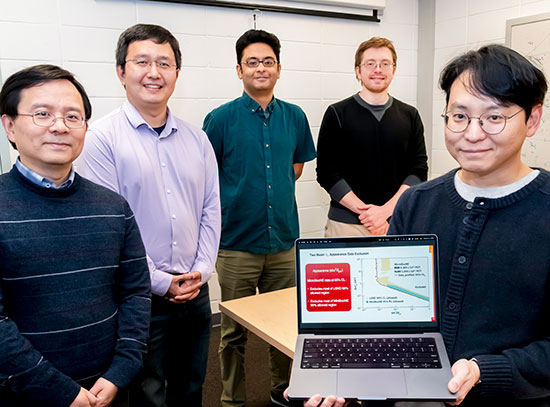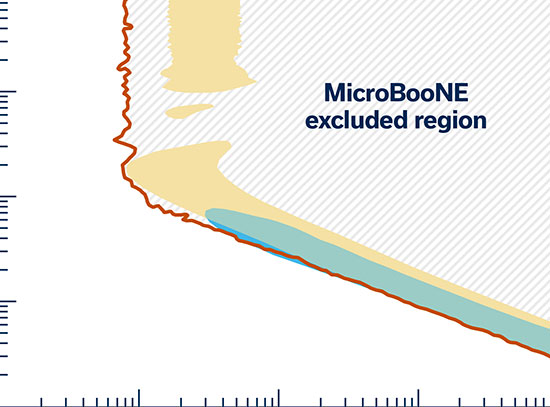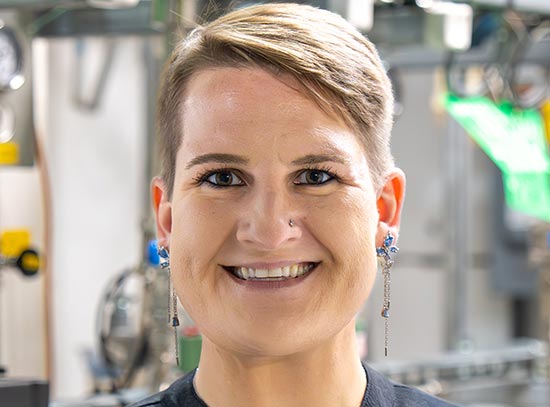Department of Energy, EPA, and N.Y. State Agree on Brookhaven Lab Remediation Projects
May 16, 2007
The U.S. Department of Energy has issued the following news release.
UPTON, NY — The U.S. Department of Energy (DOE), the U.S. Environmental Protection Agency (EPA), and the NY. State Department of Environmental Conservation (NYSDEC) have agreed on a remediation plan for Brookhaven National Laboratory's (BNL) former g-2 tritium source area and groundwater plume, the Brookhaven Linac Isotope Producer (BLIP), and eight former underground storage tanks (UST). The agreement, reached after extensive regulator and public review and comment, allows the Energy Department to implement the selected remedies.
The remedies, highlighted below, are detailed in a document called the Record of Decision for Area of Concern 16T g-2 Tritium Source Area and Groundwater Plume, Area of Concern 16K Brookhaven Linac Isotope Producer, and Area of Concern 12 Former Underground Storage Tanks. The Record of Decision (ROD) presents the selected remedial actions for these areas. The selected remedies include several actions that have already been accomplished, and the implementation of a comprehensive long-term maintenance and monitoring program. The ROD also includes a "responsiveness summary," summarizing public comments and DOE's responses to them.
Background
- g-2 Groundwater and Soil: The g-2 experiment was conducted from 1997 through 2001 on an independent accelerator beam line originating from the Lab's Alternating Gradient Synchrotron (AGS) facility. In November 1999, BNL detected the radionuclide tritium in groundwater near the g-2 experiment at concentrations of about two times the 20,000 picocuries per liter (pCi/L) drinking water standard. An investigation into the source of the contamination revealed that the tritium originated from "activated" soil shielding located adjacent to the g-2 target building. The soil had become "activated," or made radioactive, when the accelerator beam inadvertently struck one of the experiment's magnets and deflected into the nearby soil. Rainwater then carried the tritium into the groundwater. Corrective actions were implemented starting in December 1999, and included re-focusing the beam to significantly reduce the amount of beam striking the magnet, improving beam loss monitoring, installing a concrete cap over the activated soil area to prevent additional rainwater infiltration, and conducting additional groundwater monitoring. Tritium concentrations in the groundwater near the source area reached a maximum of 3.4 million pCi/L in June 2002. For the past two years, tritium levels in the groundwater downgradient of the source have dropped to less than 100,000 pCi/L. The g-2 tritium plume is located entirely in the central portion of the BNL site, and its leading edge is more than one mile north of the Lab's southern property boundary. The plume does not impact any drinking water supply wells.
- Brookhaven Linear Isotope Producer (BLIP): The BLIP facility, in operation since 1972, is a national resource for producing crucial radioisotopes for research and clinical use in nuclear medicine. In 1998, tritium was found in groundwater near the facility, which is located in the central portion of the BNL site, at concentrations of up to 53,000 pCi/L. It was determined that rainwater infiltration had occurred along the building's foundation and that the water passed through the activated soil surrounding the BLIP target vessel, which is located approximately 30 feet below the building. The rainwater leached the tritium from the soils and carried it into the groundwater. Several corrective actions were implemented in 1998 to prevent rainwater from entering the soil — the building's rainwater downspouts were repaired and reconfigured, the paved area south of the building was resealed, and a concrete cap was installed over the remaining areas around the building. In June 2000, to further protect groundwater, a liquid silica grout was injected into the soil around the target to immobilize the tritium as part of a DOE technology demonstration project. Groundwater contamination extends about 300 feet from the BLIP facility, and does not impact any drinking water supply wells.
- Underground storage tanks: Eight underground storage tanks used to hold low-level radioactive liquid waste were located at various facilities around the Lab site. These tanks were removed from the ground between 1988 and 1996, with oversight provided by the Suffolk County Department of Health Services. Confirmatory sampling was performed after the tanks were removed, and no further environmental concerns were identified.
Details of Selected Remedies
The Comprehensive Environmental Response, Compensation, and Liability Act (CERCLA, which is also known as the Superfund Act), requires that a selected cleanup remedy protect human health and the environment. The cleanup remedy also must be cost-effective, comply with other laws, and, to the greatest extent practical, use permanent solutions, alternative treatment technologies, and resource-recovery alternatives. The ROD documents the selected remedial actions for the g-2 tritium source area and groundwater plume, soil and groundwater at BLIP, and the former USTs. These remedies were presented in the Proposed Remedial Action Plan (PRAP), which was released for public comment in October 2006. Based on an evaluation of the proposed remedial alternatives, and discussions with the regulatory agencies and community, the following remedies were selected:
The selected remedy for the g-2 tritium source area and groundwater plume, is Alternative 2 described in the PRAP, as modified in response to public comment, and requires continued routine inspections, certifications and maintenance of the concrete cap and other storm water controls designed to protect the activated soils from rainwater infiltration. In addition, this alternative requires continued groundwater monitoring immediately downgradient of the source area to verify the continued effectiveness of the storm water controls. Groundwater monitoring of the g-2 source area will continue for as long as the soils remain a threat to groundwater quality. Groundwater monitoring of the tritium plume will continue until the plume attenuates (by means of dispersion and natural radioactive decay) to less than the 20,000 pCi/L drinking water standard. Based upon groundwater model predictions, the tritium plume is expected to attenuate to below 20,000 pCi/L entirely in the central area of the BNL site. Contingency plans have also been developed in the event of unexpected future releases from the source area or if the tritium plume does not attenuate as predicted by the groundwater model.
For BLIP, continued inspections and maintenance of the cap, groundwater monitoring, and institutional controls in addition to the previously completed work are sufficient to support the selection of no further action. Groundwater monitoring will be used to verify that the cap and other storm-water controls remain effective. Groundwater monitoring of the BLIP source area will continue for as long as the soils remain a threat to groundwater quality.
For the former UST areas, the closure work already completed on these eight tanks under the requirements of Suffolk County Sanitary Code Article 12 is the final action.
The Record of Decision is available for review here (pdf) and also at the Mastics/Moriches/Shirley public library in Shirley, at the BNL library, and at the U.S. Environmental Protection Agency, Region 2 library in New York City. For further information, call John Carter, U.S. Department of Energy, at 631 344-5195, or Jeanne D'Ascoli, Brookhaven National Laboratory, at 631 344-2277.
Environmental remediation at Brookhaven Laboratory is carried out under requirements of the federal Comprehensive Environmental Response, Compensation, and Liability Act of 1980. Past operations at the Laboratory have resulted in soil and groundwater contamination. Remediation work is conducted under the framework of an Interagency Agreement among the U.S. Department of Energy, the U.S. Environmental Protection Agency, and N.Y. State Department of Environmental Conservation. The Department of Energy owns the Brookhaven property, and oversees and funds the cleanup program.
One of ten national laboratories overseen and primarily funded by the Office of Science of the U.S. Department of Energy (DOE), Brookhaven National Laboratory conducts research in the physical, biomedical, and environmental sciences, as well as in energy technologies and national security. Brookhaven Laboratory also builds and operates major scientific facilities available to university, industry and government researchers. Brookhaven is operated and managed for DOE's Office of Science by Brookhaven Science Associates, a limited-liability company founded by the Research Foundation of State University of New York on behalf of Stony Brook University, the largest academic user of Laboratory facilities, and Battelle, a nonprofit, applied science and technology organization.
Visit Brookhaven Lab's electronic newsroom for links, news archives, graphics, and more: http://www.bnl.gov/newsroom .
2007-10637 | INT/EXT | Newsroom









